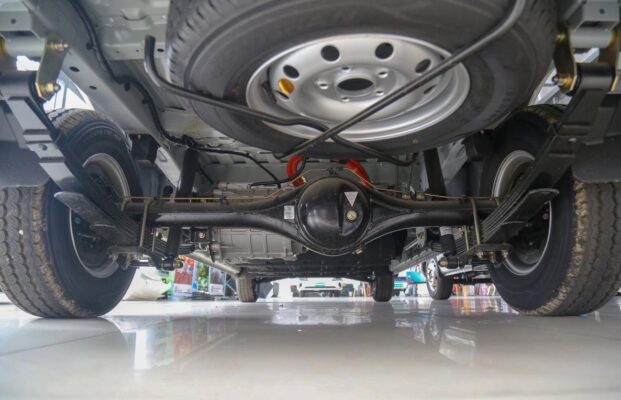Electric Truck Knowledge
On the Load-bearing Capacity of New Energy Electric Logistics Vehicles for Cargo Transportation
Posted on by Electric Trucks
New energy электр логистикалық көлікs are essentially electric versions of trucks, merely substituting the traditional fuel engine with batteries, motors, and an electronic control system. Traditional light-duty diesel trucks typically have no significant problems when carrying two or three tons of cargo. Some trucks with a rated load of 2 tons can even operate smoothly when loaded with four or five tons of cargo.

So, precisely how much cargo can our new energy электр логистикалық көлікs handle? Let’s take the Liberation J6F light truck as an example and examine the data. The curb weight of the diesel truck is 2.805 тонна, the cargo-carrying capacity is 1.495 тонна, the maximum power is 121 KW, and the maximum torque is 560 N.m. The curb weight of the electric truck is 2.995 тонна, the cargo-carrying capacity is 1.305 тонна, the maximum power is 120 KW, and the maximum torque is 500 N.m. It can be observed that the data for both diesel trucks and electric trucks are relatively comparable.

However, since new energy электр логистикалық көлікs are electrically powered, they are indeed quite power-consuming under high load-bearing circumstances, similar to the increased fuel consumption of diesel trucks under heavy loads. If the vehicle is carrying 3 tons of cargo, it will have a substantial impact on the battery range of the electric vehicle. Generally, it might affect it by approximately 30%. Ordinarily, it could travel 200 kilometers. If it is carrying 3 тонна, it may only be capable of traveling around 150 kilometers.
Therefore, for the time being, when employing new energy электр логистикалық көлікs, it is still essential to adhere to within the normal rated cargo-carrying range. Particularly for small vehicles such as electric vans, due to the battery, they are two to three hundred kilograms heavier than normal gasoline vehicles. If the braking system and shock absorption system are not upgraded, carrying more than one ton of cargo can be extremely perilous.
Now, let’s explore some additional factors and considerations related to the load-bearing capacity of new energy электр логистикалық көлікs:

The battery technology and capacity play a crucial role in determining the vehicle’s load-bearing and range capabilities. Advances in battery technology that increase energy density and storage capacity could potentially allow for higher load-carrying without sacrificing too much range.
The design and construction of the vehicle’s chassis and frame also impact its load-bearing potential. A sturdier and more robust chassis can better handle heavy loads without compromising safety and performance.
The efficiency of the motor and power transmission system is another important aspect. A more efficient system can convert electrical energy into mechanical power more effectively, reducing the power consumption and allowing for better load handling.
In addition to the physical load, the distribution of the cargo within the vehicle can affect its stability and handling. Uneven weight distribution can put additional stress on the suspension and brakes, increasing the risk of accidents.

The charging infrastructure also has an indirect influence on load-bearing. If there are sufficient and fast charging stations available, the concern about reduced range due to heavy loads might be somewhat mitigated, as the vehicle can be charged more frequently.
From a regulatory perspective, authorities need to establish clear and appropriate load-carrying standards for new energy электр логистикалық көлікs. These standards should take into account factors such as vehicle safety, road infrastructure, and the overall sustainability of the transportation system.
For fleet operators and businesses using these vehicles, accurate load planning and route optimization are essential. By carefully considering the cargo weight, distance, and available charging options, they can maximize the efficiency and cost-effectiveness of their operations.
Looking to the future, as technology continues to evolve and improvements are made in various aspects, we can expect the load-bearing capacity of new energy электр логистикалық көлікs to increase while maintaining or even improving their range and safety performance. This will make them an even more attractive and viable option for the growing demands of modern cargo transportation.
Қорытындысында, while there are current limitations and considerations regarding the load-bearing capacity of new energy электр логистикалық көлікs, ongoing research and development, along with strategic planning and management, hold the promise of overcoming these challenges and creating a more sustainable and efficient cargo transportation ecosystem.